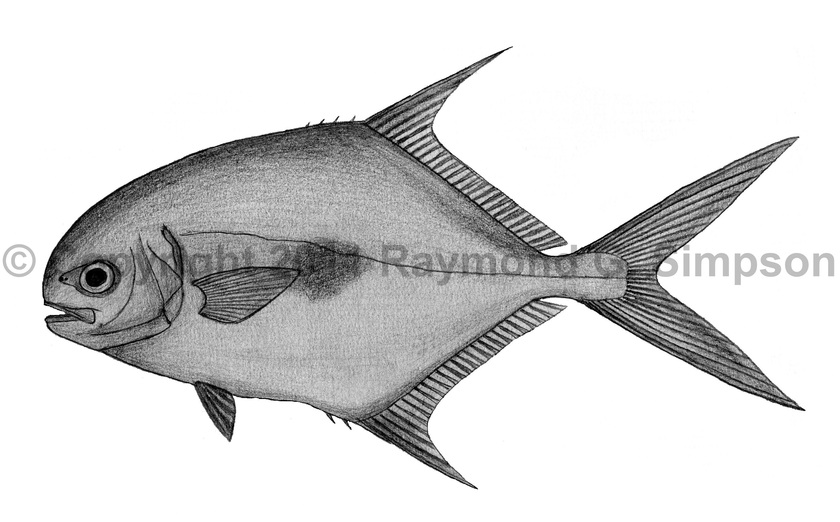
Common Name
Permit
Year Described
Linnaeus, 1758
Identification
Dorsal Fin: 5 small spines, followed by I, 17-21
Anal Fin: 2 small spines, followed by I, 16-19
Pelvic Fin: I, 5
Gill Rakers: 5-8 upper, 11-14 lower
Vertebrae: 10 precaudal, 14 caudal
Body spade-shaped and deep, with the deepest part at the dorsal/anal fin bases. Head and snout rounded in profile. Eye small with lower jaw reaching to mid-eye. Teeth small, absent in larger fishes (>20cm). Anterior lobes of dorsal and anal fins raised and pointed, but do not reach past caudal fin base when depressed. Pectoral and pelvic fins small. Tail deeply forked and large. Lateral line undulating until dorsal base, then straight with no scutes. No caudal groove or keel. Body smooth with partially embedded cycloid scales. Hyperostosis of second, third, and fourth ribs (not found in other W. Atlantic Trachinotus).
Color
Silvery body with slight darkening dorsally. A dark blotch is often seen on the mid-body behind pectoral fin. The belly is often yellow to gold, especially near anal fin. Caudal fin and anterior lobes of dorsal and anal fins dark. Pectoral fin dark.
Size
Averages to 94cm. Maximum size to 105cm.
Habitat
A coastal species found in open waters or over the bottom (soft or live). Young fish are often found in the surf zone. Adults occur singly or in small groups, juveniles in schools.
Range
Massachusetts to southerm Brazil, including Bermuda and the Caribbean islands.
References
Smith-Vaniz, W.F. 2003. Carangidae (pp 1426-1468). In: Carpenter. 2003. The living marine resources of the Western Central Atlantic v. 3.